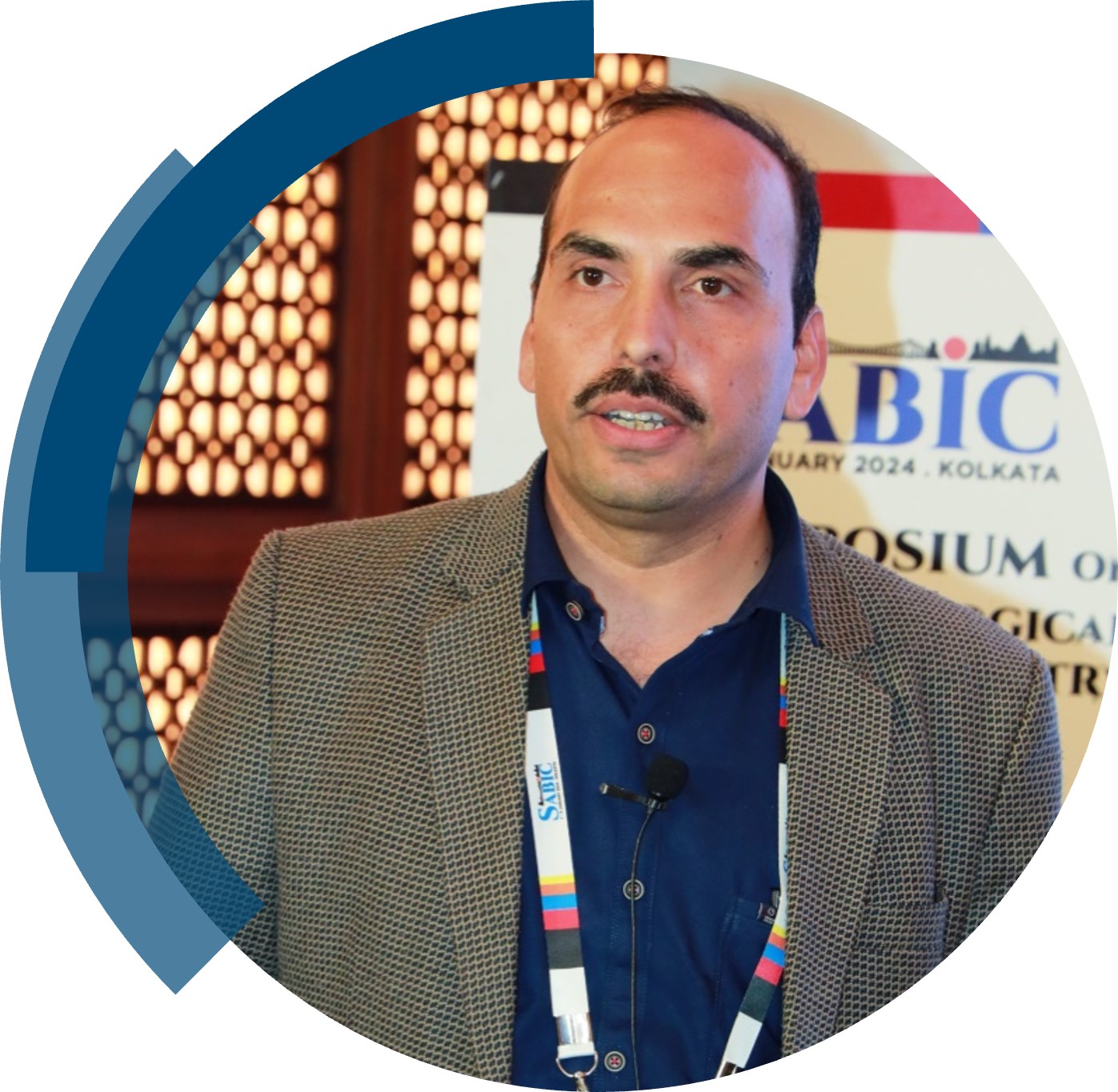We are pleased to highlight Anuj K. Sharma’s first article in ChemComm; “A bis-quinoline ruthenium(ii) arene complex with submicromolar cytotoxicity in castration-resistant prostate cancer cells“. We recently caught up with Anuj to discuss his work in more detail.
Read our interview with Anuj below.
What are the main areas of research in your lab and what motivated you to take this direction?
Our group in the Department of Chemistry at Central University of Rajasthan is practicing coordination chemistry and its wide possible applications in diseases like Cancer and Alzheimer’s disease. Ligands designed purposefully and then formations of interesting metal complexes showing useful medicinal applications are the main focus in our research group. We have been able to develop series of ruthenium and copper complexes that have potential to selectively kill cancerous cells. Detailed investigation of cell death mechanism remains a challenge that we undertake by collaborating with experts in this field. We are also working on developing multifunctional chelators capable of not only competing for metal ions from amyloid beta peptides but also to control their aggregation into toxic species. Socially relevant research topics are a natural motivation and keep us moving forward in these directions.
Can you set this article in a wider context?
Prostate cancer is one of the most diagnosed non-cutaneous malignancies among men worldwide. While early-stage prostate cancer can often be successfully treated with surgery, radiation therapy or hormone therapy, some cases of the disease may become resistant to these treatments. Castration Resistant Prostate Cancer (CRPC) develops when prostate cancer resist standard treatment with androgen deprivation therapy (ADT), which inhibits the production and signalling function of androgens (such as testosterone), which drive cancer’s growth. The main ligand design here involved use of quinoline moieties as inspired from its remarkable biological applications. In this article, we presented a new Ru(II) arene chlorido organometallic complex named as pCYRuL using 2-bis(quinolin-2-ylmethylene) hydrazine (Ligand L) that exhibit potent anticancer activity against a castration-resistant human prostatic adenocarcinoma cell line (PC-3) with 45 times more effective than the standard drug cisplatin. Very interestingly, pCYRuL is non-toxic in normal human kidney cells (HK2) as well as normal breast cells (MCF10A). Detailed studies reported in this article is about the mechanism of cell death as found that pCYRuL exerted anticancer activity via apoptosis induction and cell cycle arrest.
What do you hope your lab can achieve in the coming year?
In the project of developing metal based anticancer agents, we are very curious to know what kinds of structure is favoured for their antitumor activity and how structural variations determine the activity. We are now attempting an “structure-Activity relationship” by preparing a series of similar complexes as reported in this ChemComm paper for a broader understanding of anticancer behaviour. In an another project, we are able to make a series of multifunctional chelators that can not only compete for metal ions with Amyloid-beta peptides but also act as antioxidants, potential acetyl cholinesterase inhibitors and much more. We are very excited to complete it soon and bring to the community. In addition, we would like to be very active for research grants and many other aims to maintain an active scientific exploration.
Describe your journey to becoming an independent researcher.
I am very fortunate to be trained by two superb mentors, first by Prof. R. N. Mukherjee at IIT Kanpur as a Ph.D. student and then as a post-doc at Washington University in St. Louis, USA in the group of Prof. Liviu M Mirica. They have shaped me as a researcher in a way to do coordination chemistry with thinking and the one with definitive goals. I started my own research in year 2014 in the “still under construction” campus of Central University of Rajasthan, India. I was fortunate to have a DST_INSPIRE research grant that helped me in setting a decent synthetic chemistry lab initially. Series of first few Azo-Stilbene based metal chelators designed to chelate metals from amyloid forming peptides related to Alzheimer’s disease was published in Inorganica Chimica Acta, later we published more. More research grants from SERB, India were received to sustain the costly lab experiments. I have now more than 25 research papers but first in ChemComm is this one in 2024. I am helped by a number of collaborators and very thankful to all of them. Most special is to thank the Ph.D. scholars who worked extremely hard to make my ideas into reality. My group is slowly but steadily contributing to bioinorganic and medicinal inorganic chemistry and that is what I see myself doing in the years to come.
What is the best piece of advice you have ever been given?
“Hard work always pays off” often told by my father.
Why did you choose to publish in ChemComm?
ChemComm has its wide readership, long history and huge reputation as one of the most prestigious journals of Chemistry. It is a matter of pride to have a manuscript accepted in ChemComm. Having a Ru complex with unusual activity in prostate cancer cell line was very interesting and first thought was to publish it in ChemComm as a short communication followed by the detailed work later. I always wanted to publish here and very happy to have finally one. Hope to produce more research results worthy to be published in this reputed journal.
Explore more ChemComm news and updates on our X Feed: @ChemCommun











